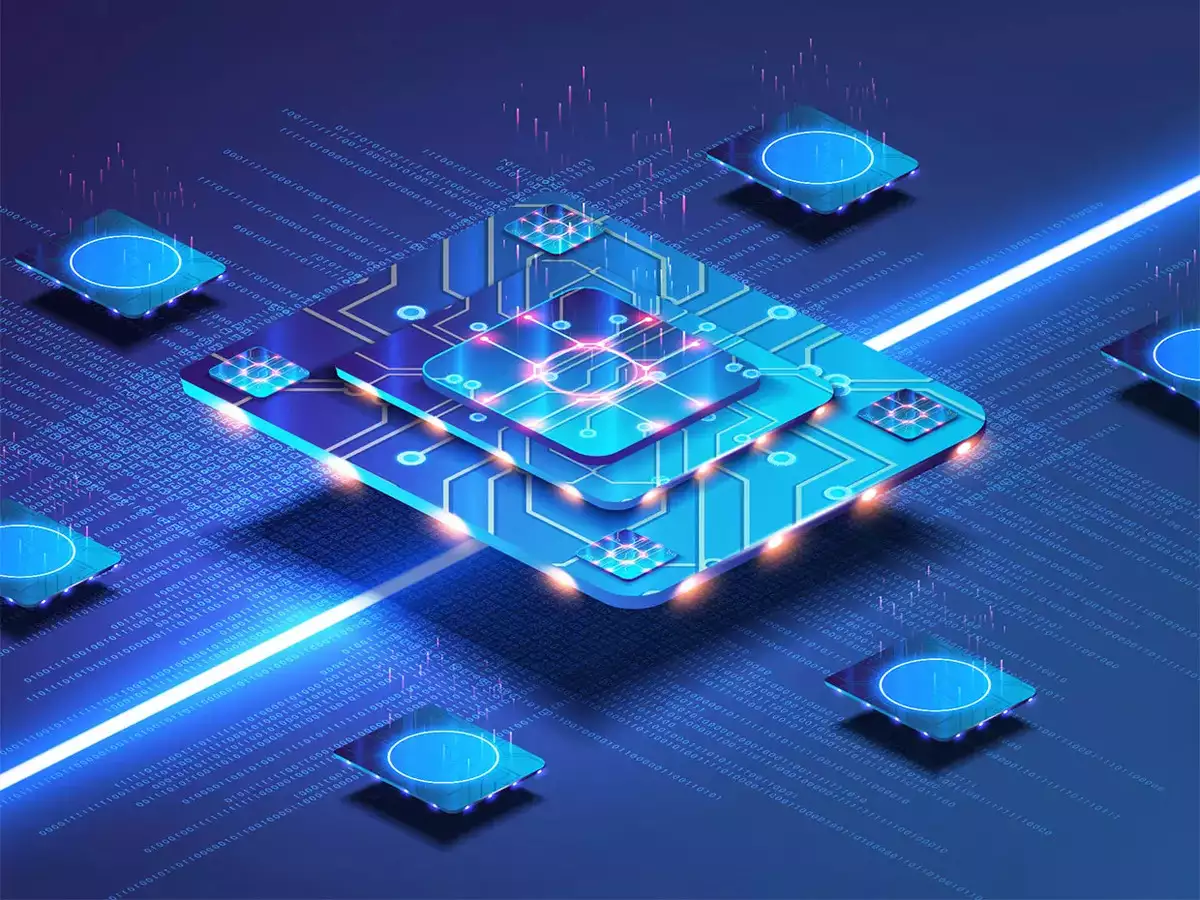The Intersection Of Iot And Artificial Intelligence: Creating Intelligent Systems
In recent years, two of the most talked-about technologies have been IoT and AI. The term artificial intelligence (AI) describes a machine’s capacity for learning and decision-making without human input. Conversely, the Internet of Things (IoT) is a network of interconnected gadgets that can speak with one another. The convergence of these two technologies, referred to as AIoT (artificial intelligence of things), has the power to completely alter how we work and live.
IoT and AI, two potent technologies on their own, work together to form a symbiotic connection whereby data gathered by IoT devices can be processed and analyzed by AI algorithms, resulting in wise decisions and actions. This creates a plethora of opportunities for gadgets to give highly personalized experiences, learn from their surroundings, and adjust to changing conditions.
Imagine living in a world where all of the gadgets in your immediate vicinity are seamlessly connected and enhance your quality of life. The Internet of Things (IoT) is a network of physical things that have sensors, software, and connections incorporated in them. This allows the devices to exchange and collect data. This is its promise. IoT has been a game-changer in recent years, but its full potential is realized when it is paired with artificial intelligence (AI). Let’s examine how AI and IoT are combining to shape technology and our lives as we move deeper into this convergence.
THE IOT-AI AMALGAMATION
Predictive maintenance is one of the key advantages of integrating Artificial Intelligence with Internet of Things. Large volumes of data from machines and equipment can be collected by IoT devices, and AI algorithms can use this data to assess and forecast when maintenance is required.
This can lower repair costs and help avoid downtime. In the manufacturing sector, for instance, sensors can be used to track the operation of machinery, and artificial intelligence algorithms can forecast when parts will break and plan maintenance appropriately.
TRANSFORMATION OF INDUSTRIES
The amalgamation of IoT and AI is reshaping many industries, generating creative solutions, and increasing productivity. Let’s examine several important industries in which this dynamic pair is transforming.
-
Healthcare
IoT devices with AI capabilities have the potential to greatly improve diagnosis, remote monitoring, and patient care in the healthcare sector. Among the noteworthy applications are:
By enabling physicians to closely monitor patients’ health conditions in real-time, remote patient monitoring lowers hospital visits and improves patient comfort.
AI-enabled wearables that can track vital signs, detect irregularities, and alert healthcare providers in case of emergency.
IoT-enabled smart pills can provide data to healthcare practitioners, guaranteeing drug compliance and tracking the efficacy of treatments.
These developments transform the provision of healthcare, enhance patient outcomes, and save healthcare expenditures.
-
Transportation and Logistics
AI and IoT together have the power to completely change the logistics and transportation sector, making it safer, more sustainable, and more effective. Among the noteworthy applications are:
- Automated fleet management solutions that improve delivery efficiency, cut fuel use, and plan routes more effectively.
- AI-driven traffic management systems that can monitor traffic flow in real-time using IoT sensors, reduce congestion, and enhance the nation’s transportation network.
Internet of Things devices are used in smart logistics to track shipments, keep an eye on storage conditions, and guarantee on-time delivery.
Businesses in this industry may improve client experiences, cut expenses, and streamline processes by utilizing AI and IoT.
-
Smart Homes and Cities
AI-powered Our cities and houses are changing due to IoT solutions, which are making them more sustainable, intelligent, and energy-efficient. Among the noteworthy applications are:
- Intelligent home automation systems that recognise user preferences and make automated changes to the lighting, temperature, and entertainment.
- AI-enabled energy management systems that use data analysis from Internet of Things devices to optimize energy use and minimize waste.
- Smart city efforts improve public safety, trash management, traffic management, and urban planning by utilizing IoT and AI.
These developments lead to enhanced comfort, better use of resources, and higher standards of living.
The convergence of these technologies will happen more frequently as AI develops and IoT grows in popularity. Companies that adopt this change will be able to outperform their competitors, and people will enjoy better daily experiences and increased productivity.
Like any technology, there are obstacles to overcome, though. Concerns about privacy, security, and ethics are vital when working with the massive volumes of data that AI algorithms analyze and gather from IoT devices. Achieving the ideal balance between protecting personal data and taking full advantage of AI and IoT capabilities is crucial.
As we see the power unleashed by the combination of AI and IoT, the future is really exciting. This combination of technologies has the power to usher in a new era of creativity, intelligence, and connectivity. It is our responsibility to use it wisely and create a world in which technology serves people in a seamless manner.
In conclusion, there is a strong synergy created by the junction of Artificial Intelligence and Internet of Things that has the ability to change sectors and spur innovation. These technologies offer a wide range of collaborative possibilities, from personalized user experiences to sophisticated data analytics. Accepting this convergence would open up new company prospects and boost customer satisfaction and operational efficiency. Organizations that can effectively traverse this intersection going forward will have a competitive edge and help shape the direction of technology-driven industries.





Comments are closed